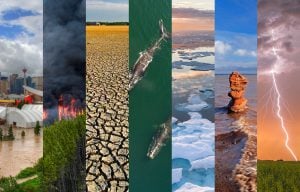It’s nearly impossible to get a hold of someone in Calgary right now.
Since the historic flood last week, many Calgarians are staying home to clean up their homes and neighbourhoods. When Canadian Geographic reached David Keith, a professor of public policy and engineering at Harvard University, he was dragging a dumpster up the driveway of his Calgary home to start the cleanup following the flood. His own house was damaged, but “a lot of people have got it worse,” he says.
Keith is probably right: of the approximately 75,000 people displaced from their homes, with billions of dollars in damage, many Calgary residents will have worse jobs this week than tearing out drywall. And as the cleanup begins, some are starting to wonder why it only took eight years for the high-water mark set by 2005’s “flood of a century” to be overrun.
As with any extreme weather event, it is not possible to definitively blame climate change for the flood. What is possible, however, is to compare it to previous records — and all the data thus far say that this flood surpasses any event on record, including the flood of 1932. Even with dams all the way up the Bow River built since 1932 — obstructions that should have slowed the flow of water — the peak flow was still stronger than 80 years ago.
That increase in intensity is predicted in climate change models, which have been forecasting more rain, earlier spring melt and increased flood risk in Alberta for a decade. It will only get worse over the next century, according to reports from government agencies, insurance bureaus and non-governmental organizations.
“(Climate change) is pretty solid science, despite what most of my neighbours say,” Keith says.
Keith believes that for many people in oil-rich Calgary, climate change will remain off the table as an explanation.
“I would actually be surprised if it changed people’s opinions,” he says. “There’s a lot of evidence that people are profoundly motivated to avoid uncomfortable truths.”
As of Monday morning the Calgary Herald had run just one article and one reader’s letter mentioning climate change out of 84 articles published about the flood.
“The Calgary Herald has always ignored climate change,” says environmental journalist Andrew Nikiforuk, whose article Calgary’s Manhattan Moment about the flood and climate change ran in The Tyee on Monday.
“Because the coverage of climate change has been so poor, people were not expecting it,” Nikiforuk suggests. “I think now people are in the stage of asking, ‘What happened?’”
Monica Zurowski, managing editor at the Calgary Herald, says that the last few days have been too busy to step back and look at the potential causes of the disaster.
“I think it would be premature to comment on that. The last few days have been a city and province in crisis,” she says. “It’s very hard to get a look or handle on why it happened.”
Zurowski admits, however, that over the course of reporting for the newspaper’s three special editions dedicated to the flood, reporters have spoken with experts who have brought up climate change. That reporting will come later as the city returns to normal, Zurowski says.
The cleanup in Calgary, Canmore, High River and many other communities in Alberta is expected to go on for months. As the mud is shoveled out of basements across the province, it remains to be seen what conversations will come next.




